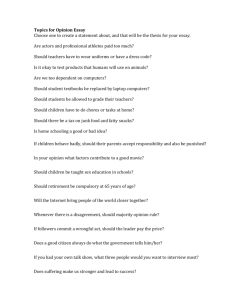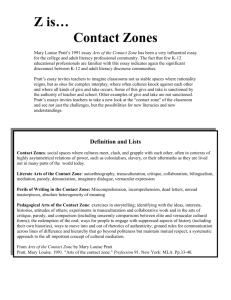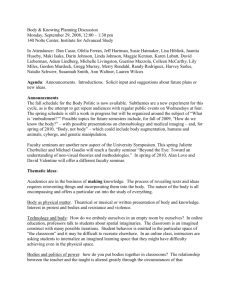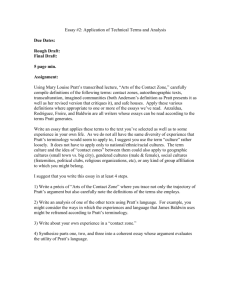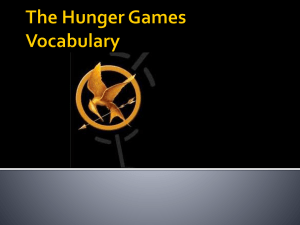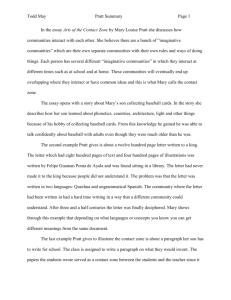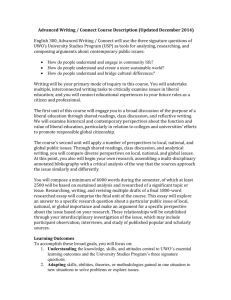Essay #3: Community Please select from the following two essay options:
advertisement
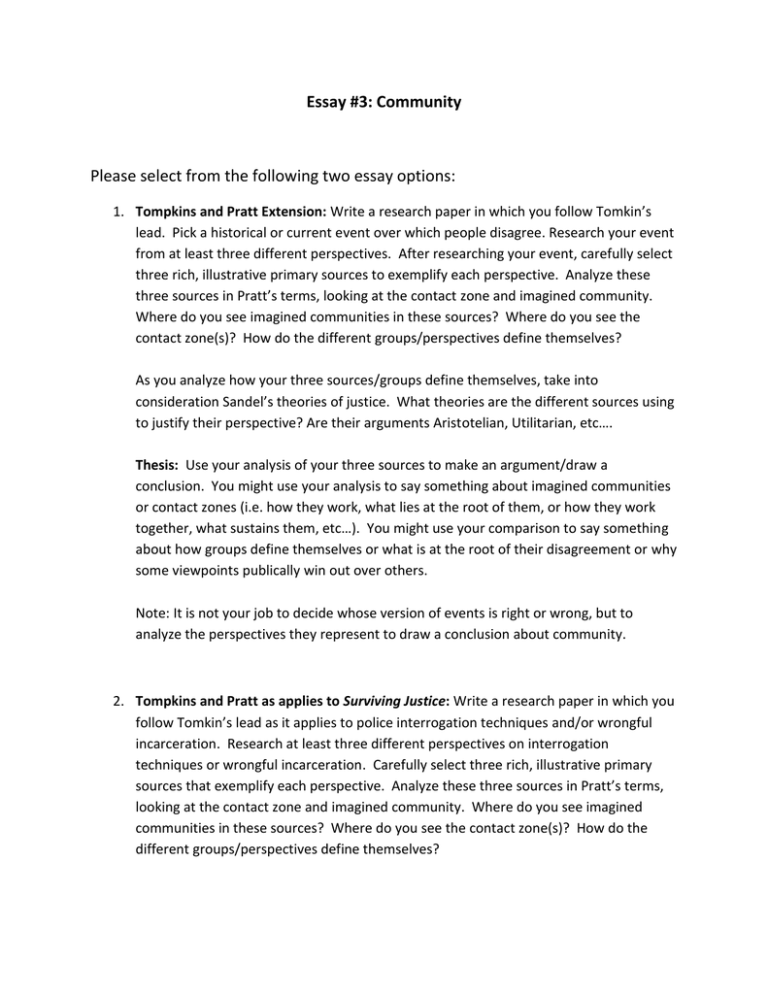
Essay #3: Community Please select from the following two essay options: 1. Tompkins and Pratt Extension: Write a research paper in which you follow Tomkin’s lead. Pick a historical or current event over which people disagree. Research your event from at least three different perspectives. After researching your event, carefully select three rich, illustrative primary sources to exemplify each perspective. Analyze these three sources in Pratt’s terms, looking at the contact zone and imagined community. Where do you see imagined communities in these sources? Where do you see the contact zone(s)? How do the different groups/perspectives define themselves? As you analyze how your three sources/groups define themselves, take into consideration Sandel’s theories of justice. What theories are the different sources using to justify their perspective? Are their arguments Aristotelian, Utilitarian, etc…. Thesis: Use your analysis of your three sources to make an argument/draw a conclusion. You might use your analysis to say something about imagined communities or contact zones (i.e. how they work, what lies at the root of them, or how they work together, what sustains them, etc…). You might use your comparison to say something about how groups define themselves or what is at the root of their disagreement or why some viewpoints publically win out over others. Note: It is not your job to decide whose version of events is right or wrong, but to analyze the perspectives they represent to draw a conclusion about community. 2. Tompkins and Pratt as applies to Surviving Justice: Write a research paper in which you follow Tomkin’s lead as it applies to police interrogation techniques and/or wrongful incarceration. Research at least three different perspectives on interrogation techniques or wrongful incarceration. Carefully select three rich, illustrative primary sources that exemplify each perspective. Analyze these three sources in Pratt’s terms, looking at the contact zone and imagined community. Where do you see imagined communities in these sources? Where do you see the contact zone(s)? How do the different groups/perspectives define themselves? As you analyze how your three sources/groups define themselves, take into consideration Sandel’s theories of justice. What theories are the different sources using to justify their perspective? Are their arguments Aristotelian, Utilitarian, etc…. Thesis: Use your analysis of your three sources to make an argument/draw a conclusion. You might use your comparison to say something about imagined communities or contact zones as it relates to police interrogation or wrongful incarceration. You might use your comparison to say something about how groups define themselves or what is at the root of the disagreement or problem. Essay Requirements: 1. Cite from at least three other outside sources (your three primary sources) in addition to Sandel and Pratt. 2. 3. 4. 5. 6. 7. If you select essay option #2, you may use Surviving Justice as one of your three outside sources. Sources must be reliable (published, researched, etc…) 8-12 pages MLA format Thesis that presents a argument/conclusion that can be draw from your analytical comparison of the three perspectives. Body paragraphs unified by a topic sentence that states the point of the paragraph Textual Support in each body paragraph, well analyzed, appropriately cited in MLA format Conclusion that does more than summarize main points Provide the background to the problem/issue in your introduction. Define terms before you use them (i.e. imagined communities, contact zones, solidarity, virtue and the law, narrative self…). Avoid logical fallacies.


